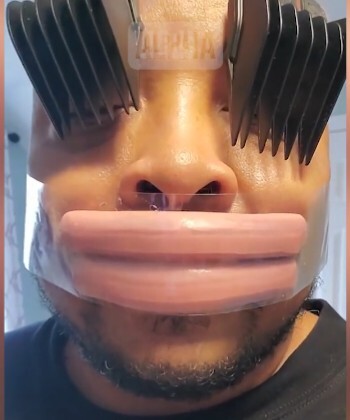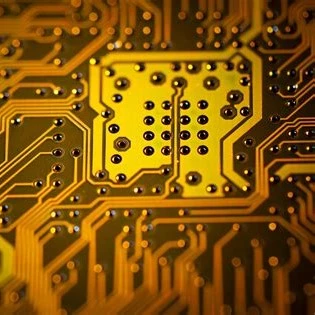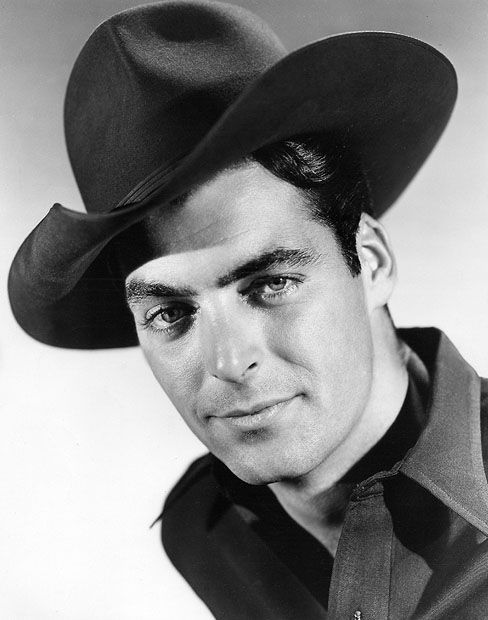Then comes a commercial break and all hell breaks loose with the sound levels.
What are commercial breaks?.. I stopped watching TV many moons ago. I stream and sail the seven seas.
Ads are making a comeback on streaming services. Not only Youtube, which is now getting more serious about blocking ad-blockers, but even on paid streaming. Netflix has an ad supported tier, Amazon runs ads for its own stuff (so far)…
I think Netflix and Amazon have the option to switch from surround sound to 2:1 or whatever which could help the audio issue if dialogue, it won’t save you from commercials though
Came here to say this. I HATE it when I set a reasonable volume level for the show, and all the commercials are twice as loud. Grrr!
It’s 2023 why are you seeing commercials 🏴☠️
There are ads everywhere. To a certain extent, you can pay money to avoid them, but they’re slowly sneaking their way back into some paid services as well.
I was watching a “free” movie on Tubi the other day, when a commercial came on and blasted my eardrums. It really took me back.
For it was my late childhood and early adolescence that our family finally achieved cable television. If you fell asleep with the TV on, god help you when it woke you up at 2 AM with a commercial louder than an atomic blast playing Enya and Enigma in Pure Moods.
Glory to Cable Networks and bless the FCC for the awakenings. For even though everyone hated the constant volume change, the FCC was powerless to stop it against the might of The Telecommunications act of 1994, which they themselves crafted with the wisdom of the telecom industry. Specifically these glorious sentences:
Title III: Regulatory Reform - Bars any State or local statute, regulation, or legal requirement from prohibiting the ability of any entity to provide interstate or intrastate telecommunications services.
and
Title VII: Media Diversity - Requires the FCC to complete a proceeding to: (1) modify or remove national and local ownership rules on radio and television broadcast stations to ensure that broadcasters are able to compete fairly with other media providers and that the public receives information from a diversity of media sources; (2) review a certain ownership restriction with respect to cable operators and report to the Congress on whether such restriction serves the public interest; and (3) consider the applicability of the FCC’s rules regarding network non-duplication protection, syndicated exclusivity protection, and sports programming exclusivity to programmers whose programs are transmitted on common carrier video platforms.
Which, among other things, allowed monopolies in media including ClearChannel which quickly ruined radio for everyone. Bless us all.
The commercials on B104 in the lehigh valley of PA in the morning are so loud it’s distorted.
Hello Lehigh Valley resident. I’ve formerly lived there.
Please accept my condolences.
I was gripping about this last night. Actors practically whispering. Had to move to headphones. Many times i wonder why the industry can’t seem to properly mic the scene or pick a decent cohesive/compatible decimal range.
There is a lot that goes in to sound engineering in order to make a movie going experience really good. Basically the sound is engineered to sound really good on the 100ish channels that movie theaters have, but when going to a home they have to crunch all that down to work with a 2.1 or 5.1 etc and there is inevitably loss due to overlapping frequencies and even immersive aspects. How can a voice seem to be as loud as an explosion for example.
On top of those difficulties you have directors like Christopher Nolan who has said that he doesn’t care about home audio and that his movies are made to be seen in a theater.
But why do they do it in TV series as well? It’s not like I’m watching better call Saul in cinema.
The people that made it probably wanted to make the audio sound best for the one person that has a great sound system, there’s a good YouTube video about it https://youtu.be/VYJtb2YXae8
Exactly! My comment above was in reference to Breaking Bad (not something in theaters). I’m watching this thru probably for the fifth time but the really quiet skyler and walt whispering dialogue (crank to 32 to hear) takes time so i missed part of it. Volume averages at 10 in my living room. Then have to be johnny on the spot and hope that 32 gets back to 10 before the whispering is over. And good help you if you’re watching subtitles because the volume indicator appears right over them.
There is a lot that goes in to sound engineering in order to make a movie going experience really good. Basically the sound is engineered to sound really good on the 100ish channels that movie theaters have, but when going to a home they have to crunch all that down to work with a 2.1 or 5.1 etc and there is inevitably loss due to overlapping frequencies and even immersive aspects. How can a voice seem to be as loud as an explosion for example.
A simple sound compression of the entire signal would solve the issue. VLC player has this feature and it’s working perfectly.
Yeah, unfortunately while it’s very simple to set up compressor levels in a DAW or even in feature-rich players like VLC, I haven’t come across any easy way to blanket apply one to your computer’s output without weirdly looping it through something like Ableton.
It seems like it should be so simple to have in Windows sound settings, but it’s never been an option. Sometimes there’s a toggle for “normalization”, but that gives you no control at all. You at least should be able to set compression ratio, lower threshold (in dB), and upper threshold (in dB).
I was wondering if there’s a software compressor for the master channel of a computer. Like many, I usually stream movies nowadays, so VLC is of no use unfortunately. Any ideas? I’m on windows, if that matters.
Windows actually has this function in the sound settings. I tried it once, but it was way too harsh. It basically removed the entire dynamics, which is pretty bad in its own way. I tried the feature quite some time ago, so maybe it’s better now, I don’t know.
Thanks, I’ll give it a try
unfortunately it sounds like this in the cinema too. Dialogue is barely understandable and 80% of the scenes are so dark, it looks like shot with an iPhone under moon light.
Just compare with any movie from the 80’s or early 90’s.
I personally reached a point where don’t even bother to pirate those movies anymore.
Who watches movies anymore? Costs a fortune, theater is dirty, people are annoying, food is overpriced, show times are inconvenient, …
At home you can just choose another movie to watch, pick another video.
But watching a movie in a big theatre is awesome
I don’t care now that I’ve bought a big TV and an ATMOS/surround system but I understand it’s not financially possible for everyone…
I‘m in the same boat. I went to the cinema a few times in the last weeks and I actually prefer my home setup. Sound and image wise. Everything is perfectly tuned in and I can lay down on my comfy sofa and just enjoy.
Unless your TV is 40 feet, it isn’t beating the theater experience.
Once you’re at a correct distance for the screen, 65" or 40’ doesn’t matter, in a theater I’m just farther away and still end up losing some of the image and have to deal with the other watchers.
As I said, once you’ve got proper equipment at home you just don’t care for the theater experience. I’ll never say it’s the same thing, I still enjoy it much more.
I sure hopes cinemas will die out sooner rather than later.
They can. You’re listening to the incorrect audio stream on your device. Your device has to request the stereo stream from Netflix or whatever, otherwise it’ll just send you a surround stream and then your TV will downmix it badly… resulting in quiet dialogue.
/work in the industry, we have to hit specific loudness averages and ranges for both dialogue and overall mix. -24 LUFS, if you’re curious.
The main reason why I bought an Appletv. Its “reduce loud sounds” feature is amazing
I never knew I needed this
I honestly believe this crap should be illegal. The visual equivalent is GoT’s level of just blackness. I can’t afford a damn OLED TV you fools. And besides Lord of the Rings had the perfect solution to show darkness two decades ago.
You preparing yourself for Oppenheimer?
It’s actually the way the sound is remixed these days. I’m not going deaf😮💨. Old movie dialogue is loud and crisp as fuck. Just watch some TCM.
Because it’s compressed, overdriven, and clipped to hell. Audio equipment back then didn’t have much dynamic range. People had to almost scream their lines to be picked up clearly by the mics. Actors used to be trained to compensate for poor audio recording with a certain speaking technique.
Funny how that made for a better watching experience.
Blame George Lucas for not finding audio acceptable in theatres and making THX to create a standard
That’s because old movies were mixed stereo or mono, not surround, and your TV can naturally handle stereo or mono.
The problem most people in this thread are having is a result of their TV crappily downmixing a surround signal to a stereo signal. You have to set your streaming device to request the stereo stream from your streaming service if you don’t have a full-on home theater. Devices by default request the surround stream.
Any time this comes up in conversation at someone’s house, I set their device to request the stereo stream, and it’s fixed. Every time.
Tvs with built in decibels limiter when?
my apple tv does this. underrated feature
The Nvidia Shield TV (small Android media player) has a built-in way to normalize audio in all apps running on it. It works great!
It does? Can you give me a hint?
It’s part of the Nvidia firmware since version 9.1: https://www.nvidia.com/en-us/shield/software-update/
Right on. Something I’ve missed clearly.
It’s called night listening mode. You can also place it in the quick menu for easier switching.
Great. I’ll give it a whirl. Thanks a lot.
We used to call it “compression” and itwas an essential part of the recording process. It seems TV shows don’t do that anymore.
It’s still called that way: Dynamic range compression
I know, but do TV shows to it?
I understand that it dynamic range is necessary and having none is terrible (look up “loudness wars” in the recording industry), but it seems TV shows are no longer mastered for a actual home consumption.
Back in the day, we would work on our nice studio monitors, switch to a pair of NS10s to make sure it would sound good on a cheap Hifi, but we would also make it sound good on something garbage. Sometimes (always in fact) this was to the detriment of how sound on good gear, but 99% of people use garbage.
In my experience, this is intentional. You’re watching a thing with full dynamic range sound. Honestly, the intention is for you to have a decent speaker system and to turn it up so you can hear the dialog comfortably. The loud parts will be loud and that is the intent. Why would they make the loud parts quiet? An explosion isn’t supposed to be quiet. They shouldn’t make it quiet for the sake of you listening to it through your TV’s built in speakers at 2 in the morning while the rest of the house is asleep. If you need the dynamic range to be compressed for your purposes you can do that yourself. Many devices have this option these days. My Roku has “leveling” and “night” modes which compress the dynamic range so there’s not such a difference between the quiet parts and the loud parts.
A lot of us live in apartments and choose not to be obnoxious assholes to our neighbors. Wheres the sound mix for us?
If you have to keep changing the volume throughout the movie, the audio engineer did a bad job, period.
Dude you can just turn on the “night” mode on whatever device you’re using and completely solve your problem. You don’t blame the sun for being too bright, you just put on sun glasses.
Or, and I know this sounds crazy, the highly paid professionals at the top of their field can do their job properly for the majority of their consumers.
Request the stereo stream in your streaming device’s audio options. Your tv/headphones are downmixing a surround stream, and doing a shit job of it. The “highly paid professionals” have made a separate stereo mix just for this purpose.
/one of the “highly paid professionals”
And ruin the experience for those with good equipment?
Should music be mixed in mono so quality is the same for those who listen to it on a base cellphone and those who listen to it on 1k$ speakers?
People will speakers for $1000 are suckers anyways. Do yes.
That explosion isn’t real, it’s not actually filmed at night, actors didn’t really get shot, isn’t filmed in real time.
If you have to start editing the movie yourself, to make it watchable, some story teller isn’t doing their job. I guess we’re at the Ikea point of ‘movies’, some assembly required.
Not all horror movies are mixed for a hundred odd channels, right? Yet even horror movies have whispered dialogues
I think we can all agree that a lot of tension stems from dialogues
Matrix was terrible for this. Literal explosions and gunshots constantly. Literally all dialogue was whispered. Don’t get me started on the damn rave club where they were talking normally. Like that’s possible.
Looking at you, Dune.
And avatar 2 was terrible for this, too.
i’m seeing oppenheimer in a week; i’m beyond excited because of the hype and loving historical drama but i cannot stand chris nolan. i watched the prestige recently and they made the electricity sounds 1000x louder than the dialog [and cut the movie intentionally to make it a pain in the ass to follow instead of just telling the story straight, because that was the thing to do in 2010]
deleted by creator
Be sure you’re listening to the stereo feed and not the surround. You’ll need to tell your streaming device to request the stereo feed.
KIRYU-CHAN
Blame your TV, not the content. Or, blame yourself if you like for not buying a soundbar or soundsystem.
A lot of TVs these days have Night Mode or the like. That’s the fix!
PS Downvoting me for… What exactly? Because I told you two solutions and neither of them are what you prefer? TVs are literally paper thin and physically can’t have good speakers except for special cases in the high end. Buy a soundbar, even though they suck and apparently people these days are scared of plugging one more cable into something, or get a stereo system for the same price and plug in two more things (speakers) that can fit anywhere on your wall or whatever.




















